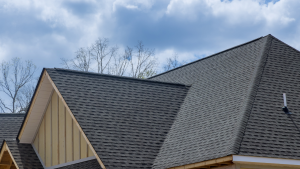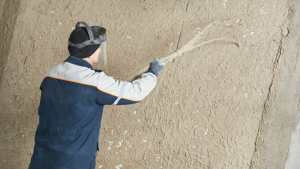As a homeowner, you may notice that the stucco on your walls is starting to crack. How do you know when to fix stucco cracks? When do you need to fix something?
Cracks in stucco are pretty typical. Those who have stucco walls can tell you that they always have cracks. If you have stucco, you need to know what causes cracks and when to fix them.
Here’s a guide to what causes stucco cracks, how to fix them, and when to fix them.
Types of Cracks in Stucco
Walls made of stucco can get a few different kinds of cracks. Other things cause stucco cracks, and how you fix them will depend on what causes them.
Here’s what to look for to determine what kind of cracks you have in your stucco.
Hairline Cracks: Usually, these cracks are no wider than 1/16 of an inch. These are the cracks you’ll see most often. It depends on them whether you choose one or the other. Most of the time, they happen in new homes because the plaster settles and moves as the house is built. Hairline cracks can happen when the wood dries out, foundations shift, or building work is done.
Foam Trim: Cracks can also happen in the foam trim used on stucco. If you see cracks here, the foam trim wasn’t put on with fiberglass mesh tape. Then, over time, cracks will form because of the expansion and contraction.
Spider Cracking: Your stucco has cracks that look like spider webs. which is how they got their name. If you see this in your stucco, it means that the base coat required more drying time. This could be because the mixture had too much water, dried too fast, or was too hot. It is needed to be right on the day it was put on.
Pattern Cracking: Your walls may have cracks that form a pattern. It often shows up on your stucco as a grid of horizontal and vertical lines. Why does this cracking happen? of problems with how the lath was installed. It’s probably not attached well, which will lead to more cracks over time.
Diagonal Cracking: As the name suggests, these cracks go in a diagonal direction and are often found near doors and windows. These happen because the foundation shifts because of earthquakes. If these cracks are bigger than others in your stucco, you should fix these first.
When to Repair Stucco Cracks
So, when should you fix cracks in your stucco if you’ve seen them?
The simple answer is: as soon as possible.
Even if you just noticed a small crack, you should fix it immediately. It may be small right now, but it could grow and cause more problems in the future. Filling it in now will stop that crack from getting worse.
On top of that, you’ll need to make sure your home is safe. If the stucco has cracks, water can get in. inside and cause problems with mold and dampness. If you don’t catch them early, they’re hard to fix, so the sooner you fix that crack, the better.
How to Repair Cracks
How you fix if you have cracks in your stucco depends on how the cracks got there.
- If the crack is very small, you can fill it in to stop it from getting bigger.
- If it’s a diagonal or patterned crack, you’ll need to do more work or call experts to help you fix the problem.
It’s pretty easy to fix a crack that’s just a hairline wide. You can get lots of things to help you fill it in at your local hardware store. Talk to the people working there if you need help deciding which one to buy.
DIY
Most products are acrylic caulk that can be used to fill in the cracks.
- You’ll need to make the crack about a quarter of an inch wide and then clean it with a wire brush.
- Then, the mixture and a standard caulk gun fill the crack.
- After 24 hours, paint over the caulk with water-based paint.
When to Call the Pros
When the stucco has pattern cracks, the lath underneath needs to be fixed or replaced. This means that the stucco will need to be removed. Reach it. Once the lath is properly attached, it will need to be covered with new stucco.
If you see large or diagonal cracks, there’s likely a problem with your home’s foundation. You’ll need to call professionals to fix the foundation in these cases first. You’ll see more and bigger cracks over time if you don’t. Call a professional to check your foundation and determine how it can be fixed.
If you see large or diagonal cracks, there’s likely a problem with your home’s foundation. You’ll need to call professionals to fix the foundation in these cases first. You’ll see more and bigger cracks over time if you don’t. Call a professional to check your foundation and determine how it can be fixed.
How to Prevent Future Cracking of Stucco
Now that you have fixed any cracks in your stucco, you want to make sure that no more cracks appear.
How can you make sure that you won’t need to fix the stucco again in the long run?
The best results depend on how the stucco is put on, so you’ll need to use new stucco.
- Make sure that good water-resistant water damage can be prevented by putting a barrier in the stucco. The cracks that come from it.
- The lath must be put up correctly in order to prevent cracks.
There are ways to install something that will reduce cracks. Ask your construction workers about control joints, casing, and corner beads. All of these work to reduce the stress on the stucco, making it less likely to crack overall.
Conclusion
If you carefully watch your stucco closely, you can keep it in good shape. Stop any significant problems from happening. If you fix small cracks when you see them, they won’t get worse and cause you more trouble. When you see cracks in stucco, it’s always best to fix them as soon as you see them.
If they’re bigger or more complicated than you thought, have an expert look at them.
This will keep your stucco in good shape for many years.




